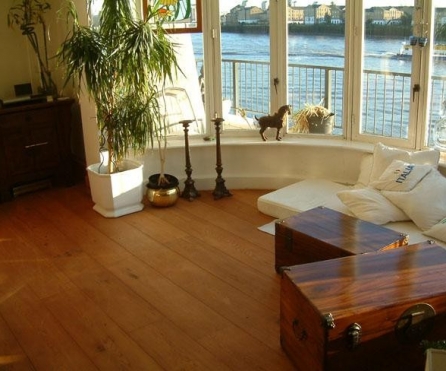Maintenance

Pre-Finished Flooring Care and Maintenance Guidelines
Proper care and maintenance will help ensure your floor always looks its best. Simply follow the maintenance steps and floor care tips outlined below.
Ongoing Routine Care and Maintenance:
1. Vacuum, sweep or dust mop your floor once a week, or more if needed. The vacuum head must be brush or felt, and a wand attachment is preferable. Do not use vacuums with beater bars or hard heads. A hardwood floor swivel-head mop with terry cloth cover is also highly recommended to eliminate finer particles of grit and dirt that can act like sandpaper on hardwood floors.
2. Spills and tracked-in dirt should be wiped up immediately. For spot cleaning, apply no-wax wood floor cleaner onto a clean cloth and rub onto the spot. Never apply wax treatments to your urethane-coated floor.
3. Periodically, as necessary, thoroughly clean the floor with a no-wax wood floor cleaner and swivelhead mop with terry cloth cover. Spray the floor cleaner directly onto the floor or dampen the swivel-head mop and apply. DO NOT allow excess no-wax wood floor cleaner to remain on the floor’s surface. Excess liquid may damage the fiber of the wood.
4. Use interior and exterior doormats at all entrances to collect dirt and moisture and prevent it from being tracked onto the floor.
5. Area rugs are recommended in front of kitchen sinks, at all pivot points and within high-traffic areas. Do not use rugs with solid rubber or vinyl backings. The rugs must be made of a breathable material to prevent moisture entrapment.
6. Never clean or wet mop with water. Water may permanently damage the floor.
7. Never use any of the following products (or products similar in nature) on your floor: ammonia-based cleaners, acrylic finishes, wax-based products, detergents, bleach, polishes, oil soap, abrasive cleaning soaps, or acidic materials such as vinegar. Many of these products can pit or etch the finish of your flooring or prevent the proper use of recommended maintenance materials.
8. Keep animal nails trimmed to minimize finish scratches.
9. Do not damage your floor with shoes having heel taps or sharp objects protruding from the sole such as rocks, exposed nails and gravel.
10. Avoid walking on wood floors with spike- or stiletto-heeled shoes. Spike or stiletto high-heels must be properly maintained to prevent damage from the steel heel support.
11. Do not roll or slide heavy objects directly upon the floor. When moving appliances or heavy furniture, consider laying a solid protective covering on your floor and gently “walk” the item across it. Carpet or cardboard is not adequate to prevent surface compression scratches.
12. Use furniture leg protector pads under ALL furniture and make certain to keep them clean and well maintained.
13. Replace hard, narrow furniture rollers with wide rubber rollers.
14. Keep the relative humidity in your home between 40% and 60%.
15. Protect your floor from direct sunlight. Use curtains and UV resistant film on large glass doors and windows. Move area rugs occasionally as they block sunlight and may give the appearance of discoloring under the rug.
Quick Fix Tips
Spots caused by food, water or animals
• Apply no-wax floor cleaner to a clean soft cloth.
• Rub the area to remove the stain or spot.
• More stubborn spots may require additional cleaning with an appropriate cleaner. Grease/Lipstick/Crayon/Ink Spots/Rubber Heel Marks
• Apply a no-wax cleaner to a clean soft cloth.
• Rub the area to remove the stain or spot.
• More stubborn spots may require additional cleaning with an appropriate cleaner. Chewing Gum, Candle Wax
• Apply a sealed plastic bag filled with ice on top of the deposit.
• Wait until deposit becomes brittle enough to crumble off.
• After deposit has been removed, clean entire area with a no-wax floor cleaner. Minor Abrasions/Scratches
• Use a wood flooring touch-up kit in smaller areas.
• Apply the appropriate color top coating when larger areas are reconditioned. Deep Scratches/Gouges
• Individual planks, strips or parquets that are heavily gouged or damaged can be replaced.
• If needed, the entire floor can be refurbished.
